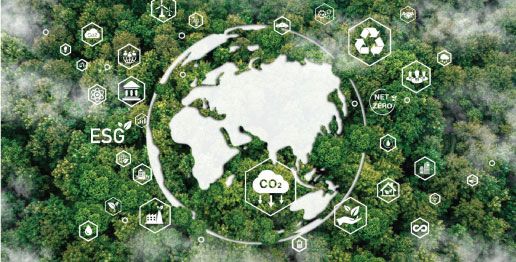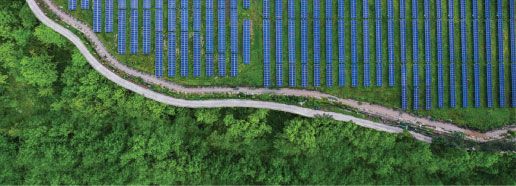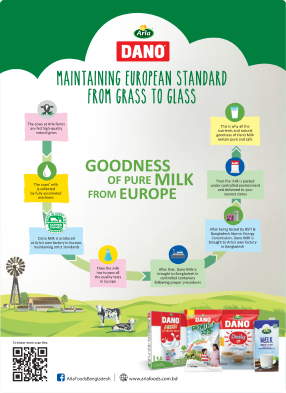- info@ficci.org.bd
- |
- +880248814801, +880248814802
- Contact Us
- |
- Become a Member
- |
- |
- |
- |
- |

If markets were perfect and there were no external costs, then there would be no need for Green Financing. To define terms: When a product is produced the costs are partially internal-paid by the firm; and partially external-paid by the public. When there are no external costs then the market is working correctly, and firms pay the costs incurred for what they produce. If there are external costs, then the producing firm does not pay the entire costs of production. These costs are borne by the public.
Take a simple example: A factory makes canned fish; they are not careful in cleaning the fish and the cans; as a result a certain percentage of persons who buy the fish get sick. The cost to these persons is purchase of medicine; days lost from work; and discomfort or pain. Part of this external price can be estimated. In the example the cost of medicine and lost working time are readily determined. The Government can establish a bureau to inspect food producers requiring a high standard of cleanliness that will stop the sickness. The costs have now shifted from the public to the producing company [the company must pay for the costs of changing procedures to have clean fish]. The tax payers pay the cost of the bureau but that should be very small. The rules of the government act to correct the market imperfections, passing the external costs back to the company that now recognizes these as internal costs.

There are many external costs causing government to act to force producing firms to internalize these costs. Many environmental rules about noise, solid waste, disposing of water are made by Government. In Bangladesh the implement of such rules is very weak due to corruption. For example, the tanneries just ignore the rules about dumping chemicals, construction goes on in the middle of the night causing noise to people in the area, regulations about dilution of foods or allowing impurities in food are weakly enforced. Good government recognizes these external costs and acts to turn them into internal costs to the producer.
Some people believe that emitting greenhouse gases [GHGs] into the atmosphere is a cost borne by the public. These costs are the negative impacts that fall upon the earth due to the GHGs accumulating in the atmosphere warming the planet. President Trump does not believe this is a serious phenomenon and refuses to see the external costs that climate scientists argue are a consequence of the warmer earth caused by the GHGs. We accept the majority view that the emissions are harmful and external to the producer's costs. To cause the producers of GHGs to take account of the costs there are several methods: In brief there can be regulatory supervision where rules are issued that must be followed by those who emit these gases. Another possibility is to establish a price on carbon. If you emit GHGs then you pay according to the amount and if you remove GHGs then you are paid. If you are a farmer, then the plants remove carbon dioxide; similarly, a tree does the same so you would be paid if you cultivate crops or if you raise trees. In our world the amount paid by emitters would be much greater than the amount received by removers. However, if the price of carbon was increased then those who are emitting gases would pay more. If there was an arrangement that an electric vehicle was paid for the amount that it did not emit, if it was an internal combustion engine, we would see electricity producers shift quickly to clean energy sources and the automobile companies begin to make more EVs.

This general strategy of establishing a price for carbon emissions and charging those who emit carbon into the air and refunding those who do the opposite would have the impact of shifting production away from positive net emission. Set a carbon price and measure the change in emissions; gradually increase the carbon price to reduce the net emissions. If a scheme such as this was formulated with the program stipulated as to future change in the carbon price then the market would gradually adjust to reach a zero level of net emissions.
With such a regulatory program in place financial institutions would automatically include the charges and refunds in their estimates of loan repayment capacity and correction for the external costs of GHG emissions would automatically enter the economy.
 Green finance refers to the belief that emitting GHGs shifts a cost onto the public. The government fails to establish a price for carbon and enforce it as described above. An alternative is for banks to voluntarily consider these external costs in making loans. If a company was an emitter, it would be charged a higher interest rate, and the bank would then use the surplus earnings [above normal interest rates] to offset lower rates charges for projects that used technologies that reduced emissions. The bank would use its financing power to encourage investment in projects lowering emissions and discourage investments in projects that increase emissions.
Green finance refers to the belief that emitting GHGs shifts a cost onto the public. The government fails to establish a price for carbon and enforce it as described above. An alternative is for banks to voluntarily consider these external costs in making loans. If a company was an emitter, it would be charged a higher interest rate, and the bank would then use the surplus earnings [above normal interest rates] to offset lower rates charges for projects that used technologies that reduced emissions. The bank would use its financing power to encourage investment in projects lowering emissions and discourage investments in projects that increase emissions.
In practice this would be difficult. In automobile loans the interest rate would be lower for EVs than for internal combustion driven cars. But banks would never expect to balance, indeed would interpret such a scheme to make more money. Some countries just provide a direct credit to the buyer of the EV.
It is illegal to provide lower interest rates for green projects. A listed company is by law to make as much money as possible for its owners. Management cannot deliberately reduce profits. If the stockholders want to give potential profits away, then there must be a resolution at the AGM instructing the management to do so. Almost all banks are limited companies and so cannot indulge in green finance if this results in lower returns to the owners of the company.
It is up to Government to act. One approach, complicated but feasible, is to establish a carbon price to be charged to emitters and to be paid to removers. The Government would charge all electricity-generating plants a surcharge covering the carbon price. It would charge an annual fee to every vehicle using an internal combustion engine. It would charge a fee for industrial processes that were net GHG emitters (cement and steel).
If Government is unwilling to work out a carbon tax, then the banks could make lower-cost loans that promoted removal of GHG and apply to the central bank for the loss of potential profits to be compensated. The reward of removers would be promoted.
All these schemes are complicated and difficult to administer. Such schemes do not work in Bangladesh and usually promote corruption.
Ultimately, green finance is a propaganda exercise without real impact on emissions and without any gains for Bangladesh. Exporters will not get higher prices if they are green.

The only real bite is if important buyers of Bangladesh garments demand environmental improvements. That may well happen with the EU, but not with the USA. In this event, the Government does have a responsibility, and bank loans to achieve these requirements can reasonably be subsidized by the central bank. But one should be very clear that this is in response to a demand by importing nations.
Bangladesh is a very small emitter of GHGs by world standards. There is no reason to make a big fuss over this point unless it is demanded by foreign buying nations. Bangladesh should develop an electrical system that is as cheap as possible without concern for emission levels. It should develop a transport system that is as cheap as possible. Here, it is likely that the use of EVs will be cheaper, and the vehicle fleet should be replaced slowly.
Demands for electricity for cooling will grow rapidly with rising temperatures and heat waves. Government regulation to require low-energy consumption air conditioning is required desperately for the survival of the population. Here, low-cost consumer loans may be subsidized by the central bank. The same point might be made for the air conditioning of the RMG factories, where cooler working conditions will raise productivity.

In summary, green finance—low-cost loans—should not be used to make anything green unless there is a direct benefit to Bangladesh. Bangladesh needs cheap electricity, not green electricity—the same for the transport and cooling systems. Major schemes such as pricing carbon are first unlikely to be administered well, and second, emissions are not a Bangladesh problem. Finding the most efficient technologies and high-return investment is the target of the banking system, not green finance.





